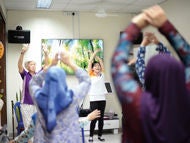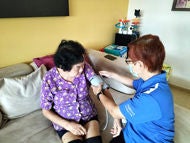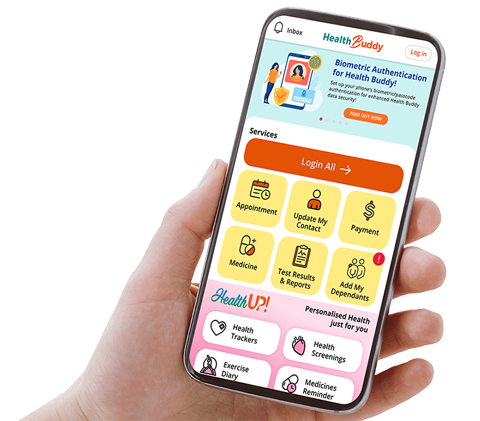What is - Bullying and Teasing
Bullying and Teasing: Coping with a Medical Condition
Individuals with a medical condition may have a wide range of defining physical characteristics that give them an unusual appearance. Children who look noticeably different from others are particularly vulnerable to getting unwanted attention, or being teased and bullied by other children. As such, caregivers often have great concerns about the medical condition that affects how their child looks and how they would cope in social situations. In fact, one predominant concern is about the child’s social acceptance and his/her ability to adapt within the school setting. As much of what children do and say comes from watching others respond and learning how to behave in actual situations, it is important that caregivers get some tips to support their children with social problem-solving.
Is it teasing or bullying?
Children can be overtly forthcoming by asking questions and making nonverbal gestures (e.g., staring) to satisfy their curiosity about another child’s different physical appearance. This may be interpreted as an unkind social experience by both you and your child. This can be particularly upsetting and confusing for your child if he/ she experiences such situations multiple times in a day, and if he/she finds it hard to tell apart harmless teasing from bullying.
Teasing
Most people would have been teased at some stage and there are different types of teasing.
- Nice and harmless teasing
This may be when someone makes a little joke about your child, or it may be a reciprocal banter between your child and someone else. It is common for peers and family members to tease each other in fun and amusing ways.
- Inconsiderate teasing
Teasing can be unkind when your child is made fun of, called names, pointed at, or singled out. It can be an unpleasant experience for your child even if it occurs infrequently and also when other children do not show intent to upset him/her on purpose. This may happen more so when children appear different. The ‘teaser’ may not know how to ask questions about your child’s appearance in appropriate ways. He/she may therefore say or do things that they think is funny or clever, often without thinking about how this may upset your child. However, these things can be very hurtful if your child is teased over and over again, especially when he/she is already feeling sensitive and bothered by how he/she looks.
Bullying
As opposed to teasing, bullying is when someone or a group of children do things to intentionally pick on, upset, humiliate, or hurt your child. It is usually done in a nasty and repeated way. Children who look or sound different may encounter more bullying and they can find it especially hard to deal with these upsetting situations. As with teasing, there are different types of bullying.
- When others do something to your child
This may include ignoring your child and stopping others from befriending him/her, staring, making faces or gestures, stealing or hiding your child’s things, blaming your child for things he/she did not do, making your child do things he/she does not want to do, displaying pictures of your child in public places, pushing, and hitting. - When others say things to your child
Other children may use nasty words, call your child names and threaten him/her, and spread rumours about your child in school or other public places.
- Using computers, social media, and phones
This may involve posting nasty photos, videos, or messages about your child on You Tube, Facebook, WhatsApp, Twitter, or other social media platforms. Other means might be using your child’s identity to set up an account under your child’s name, or even making verbally aggressive or threatening calls or messages via phone.
What you and your child can do to cope with teasing and bullying
- Teach your child what bullying means and tell him/her what it says about bullies.
Let your child know that bullies may do such mean things because they may be insecure and not confident about themselves, are resentful, or who have experienced bullying themselves. These children bully others to make themselves feel better, more powerful and confident by belittling others. Importantly, caregivers need to ascertain the full report of the events. Ascertain if your child may be unknowingly contributing to the bullying via his/her responses or behaviours (verbally or non-verbally). Reflect with your child on how to respond differently next time, and also acknowledge that it is not an easy situation to be in. At other times, being bullied is not your child’s fault. They may hence require reminders that their peers’ behaviours are not acceptable and that they need the support from adults to stop these behaviours.
- Look out for signs of bullying
Many children do not share (especially with adults) that they have been bullied. It is therefore important for caregivers to recognise some possible signs of being victimised (e.g., complaints of physical symptoms like stomachaches or headaches, feeling sad or angry more than usual, hiding away alone at recess time, loss of or damage to personal belongings). Get help from the teachers and school counsellor to monitor and support your child’s peer interactions if you suspect that your child may be bullied.
- Encourage your child to tell an adult that he/she trusts
Talk with and listen to your child every day. Spend a few minutes daily asking specific and open-ended questions about their time outside of home (e.g., who they spent time with and what they did during recess,student care or, tuition class, and what happened on the way back home from school). Help your child to feel comfortable talking to you about their friends and peers before they experience any bullying event.
- Teach your child some ‘anti-bully’ strategies such as:
a) Do not show feelings in front of the bullies as they get great joy and satisfaction from seeing their victim upset.
b) Ask the bullies to STOP. Teach your child to stay calm, look the person in the eye and speak calmly, confidently, firmly and clearly. Say something strong but not rude back to the bully. For example, “Stop it, I don’t like what you said”; “Please stop what you are doing, I don’t like it.”
c) He/she may simply choose to walk away calmly and confidently. Use role plays to practise walking away standing up tall with head held high.
d) Do not hit back or say nasty things in return. Inorder to stay in control of anger, teach your child to take some deep breaths and use positive self-talk (e.g., “I don’t need to listen to them”, “I have friends that I can go to and do not think the same of me”). To stay safe in case of physical aggression, shout out to others to get attention or put up his/her hands to defend himself/herself without hitting back.
e) Get help from an adult (e.g., teacher, school counsellor, principal, volunteer) nearby should your child be experiencing some form of repeated bullying. Teach your child to stay near places with more people, teachers or other adults in school, or sit near the driver on the school bus. Encourage your child to stay out of secluded areas, especially when there is no supervised lesson time. Your child may also stay close to friends who may help him/her out.
f) Encourage your child to monitor and be aware of what happened, when the incidents happened,and who was involved.
g) Encourage your child to share this with a close friend and to talk to you when they return home from school. If you suspect that your child may be bullied and is not able to tell you verbally, encourage him/her to do so non-verbally (e.g., write you a letter, send a phone text, or email) instead.
- Report it to the school
All children have a right to feel safe at school. Caregivers may report the bullying to school personnel to help them monitor the situation and support your child to cope with bullying.
- Build your child’s self-esteem and resilience
Every child has his or her strengths, talents, and interests. Create opportunities for your child to do well. Involve your child in activities that he/she excels in. When self-esteem improves, your child will be less likely to use defensive and withdrawing behaviours to cope when he/she feels threatened.
- Teach your child social skills and problem solving skills
A child with medical condition that affects their physical appearance may sometimes seem to be struggling socially. He/she may appear to be a ‘loner’, being oversensitive or overbearing, or attention-seeking. When your child lacks positive social experiences, he/she may lack opportunities to learn how to engage with others. Collaborate with the school personnel to teach your child key social skills (e.g., joining in play, starting and maintaining a conversation, eye contact, social smiles, offering help, taking turns).
Here are some possible suggestions on social interactions
Your child may receive some unwanted attention such as staring, comments, and even unkind behaviours if he/she looks physically different. You can teach your child what to say or do to respond to other people’s reactions by using the below strategies.

Reference
Note: Materials in this brochure are adapted from resources in www.changingfaces.org.uk
Contributed by
The information provided is not intended as medical advice. Terms of use. Information provided by SingHealth.



















